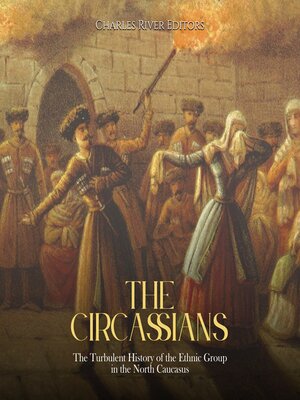The Circassians
audiobook (Unabridged) ∣ The Turbulent History of the Ethnic Group in the North Caucasus
By Charles River Editors

Sign up to save your library
With an OverDrive account, you can save your favorite libraries for at-a-glance information about availability. Find out more about OverDrive accounts.
Find this title in Libby, the library reading app by OverDrive.



Search for a digital library with this title
Title found at these libraries:
| Loading... |
Circassia could be broadly split into a western and eastern region. Eastern Circassia was inhabited by Kabardians who mainly spoke Kabardian while Western Circassia was made up of Adyghe, who spoke the eponymously-named Adyghe. As a result, discussions about the Circassians tend to split the geography of Circassia into two portions: Eastern Circassia, or Kabardia, and Western Circassia, or Adyghe. Geographically, Kabardia was situated in the middle segment of the Caucasian peninsula, with steppes to the north, and higher mountains to the south. The two key rivers in the Circassia region are the Kuban River, originating near Mount Elbrus in the Caucasus Mountains and flowing from south to north into the Sea of Azov, and the Terek River, originating in the Mtskheta-Mtianeti region of Georgia and flowing from west to east into the Caspian Sea. The Sunzha is another of the major rivers that dissects the region and acts as a tributary of the Terek. These waterways would provide strategic points in the long Russo-Circassian wars. The Caucasus region itself contains a repository of raw materials important in history (and today), including petroleum, natural gas, copper, manganese and tungsten. It also has fertile soil capable of growing wheat, barley, corn, sunflower, and many fruits and vegetables. It is unsurprising, therefore, that outsiders have coveted the region.
The Circassian people were never united as a single political bloc, which provided a core problem for their survival as larger powers, outsiders and invaders were able to exploit differences. They were invaded on many occasions during their history in the pre-modern period, including by the Mongols and the Khazars.






